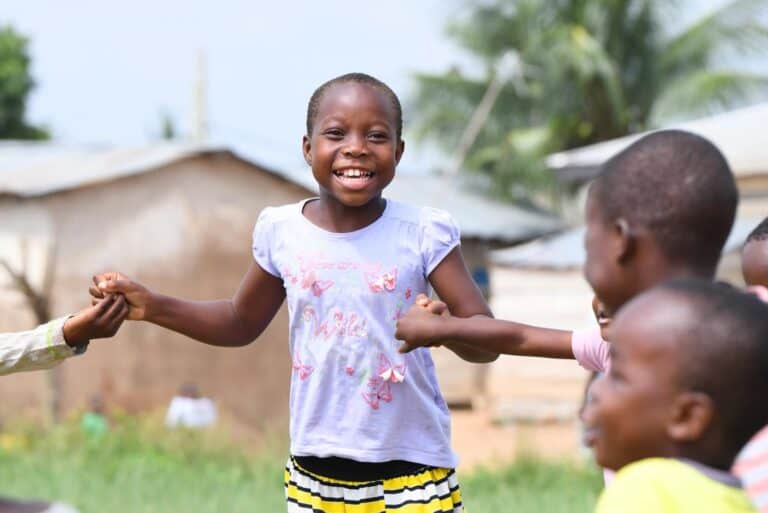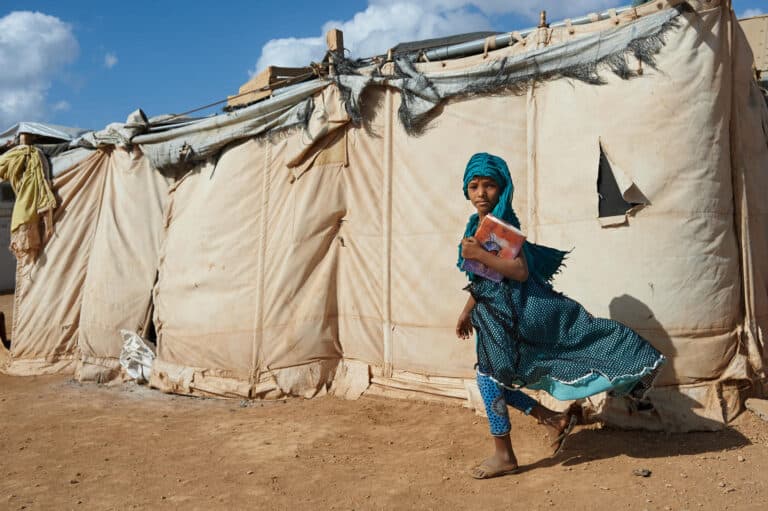The COVID-19 pandemic has resulted in many unprecedented situations – the unparalleled demand for data is no exception. At all levels – local, national, regional and global – a wide range of data are required to better understand the impacts of COVID-19.
At UNICEF, we are on a fast learning curve and are quickly adapting our ways of working to better use data to advance children’s rights. The pandemic presents an unprecedented impetus for collaboration, learning, simplification and agility – and the use of these criteria as drivers for investing in field-tested solutions – to support data-informed decision-making.
As a sequel to Round 1 of the Data for Children Catalytic Fund, UNICEF launched Round 2 as an adaptation to the ‘new normal’. While Round 1 was an opportunity to field-test creative solutions to strengthen data savvy across country programmes, Round 2 is an opportunity to showcase how we can bridge the gap and scale up successful pilots – a process that has proven to be challenging in the past.
A call for proposals
UNICEF asked country offices to identify and put forward proposals where existing solutions and good practice examples in the data ecosystem (‘lift’) have been used to demonstrate scalability (‘shift’). In other words, ‘lifting’ a solution that has already been field-tested and successful in one context and ‘shifting’ this solution to another context, adapting the solution according to the new contextual needs.
This call for proposals was met with great interest, bringing in 20 applications from 4 regional offices and 17 country offices, to implement and learn from solutions lifted from other contexts, sectors or country offices. Requests for funding amounted to a total of US$ 1.2 million; regional and country offices, on average, indicated that they would be able to match contributions by more than a third.
The following six projects were selected on the basis that they met a clear set of criteria: problem-driven (not tools-first); collaborative and learning-focused; aligned with country priorities; and finally, practical and achievable in the programming context of the COVID-19 pandemic.
Botswana, on contributing to national data systems strengthening
Botswana is lifting a “Data Must Speak” solution on education data landscape analysis from Namibia to improve the design of the future revamped Botswana Education Management Information System (EMIS). Through this project, UNICEF continues to support Botswana’s Ministry of Basic Education to improve data quality, build a stronger culture of data use within the Ministry, and enable data-driven planning and more equitable allocation of resources among schools.
Afghanistan, on developing a rapid data landscape assessment for COVID-19 response and recovery
Afghanistan is lifting the use of the COVID-19 rapid data landscape analysis and action planning process from Botswana and Jamaica to shape its data for children investments within the context of a protracted humanitarian crisis, while also responding to emerging needs due to the pandemic. Before data collection begins, Afghanistan will clarify which data are really needed, and explore how it can be agile in its data investments despite a rapidly changing context with multiple hazards and risk factors.
Ghana, on use of public finance data for social accountability/public advocacy
In the past, Ghana civil society structures, called ‘local accountability networks’, have proven a successful way to advocate for improved maternal and newborn health services delivery at the local level. UNICEF is now leveraging these local structures to drive active citizen participation in monitoring public finance management at the local level to address children and women’s needs.
Indonesia, on use of big data for policy advocacy
Indonesia is pushing the boundaries on the use of big data to aid government decision-making in public health response and policies via population mobility data, and is shifting the solution to neighbouring countries Thailand, Malaysia and the Philippines. UNICEF Indonesia has worked with partners, including Cuebiq and Facebook through the Data for Good initiative, to gain a deeper understanding of patterns and implications of population mobility, as a result of the Government’s physical distancing measures. Through analysis of patterns and trends in big data, UNICEF can provide advice and support to government partners on when physical distancing measures can be loosened and when schools can be opened, while at the same time providing unique insights into children’s learning patterns and income-related differences. These insights will be significant until the virus is under full control and/or when a vaccine has been distributed across the region.
Namibia, on leveraging technologies for accountability to affected populations
Using U-Report as a tool for youth engagement coupled with data science techniques, Namibia aims to trace the secondary impacts of COVID-19 thematized around continuity of learning, psycho-social wellbeing, WASH in Schools (including MHM), learner pregnancies (expected to surge during lockdown) and children with disabilities. This project is aligned with Namibia CO’s support to Government in disaster risk management efforts to incorporate the needs and rights of the most vulnerable children in government planning and programming.
East Asia Pacific (EAP) and East and South Africa (ESA) Regional Offices, on leveraging technologies for rapid data collection and effective monitoring
These two regional offices are collaborating out of a common understanding that disparate data collection and monitoring systems limit the use of data for learning and decision-making in humanitarian settings and weaken the evidence base for programming, advocacy, innovation and resource mobilization. Following the lead of UNHCR (kobo.unhcr.org), WFP (moda.wfp.org) and other agencies, UNICEF will establish dedicated access to the Open Data Kit (ODK) based on the data collection ecosystem. This enables multiple downstream benefits, including but not limited to, a common COVID-19 support package on rapid data collection and results monitoring.
What’s next?
Projects were launched in July 2020 and project teams will be sharing initial results by January 2021. Stay tuned for more updates!



